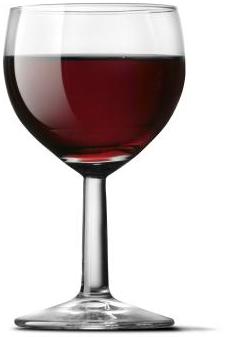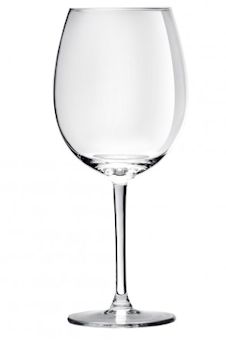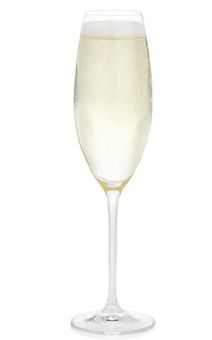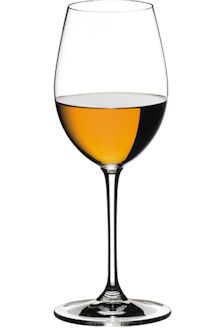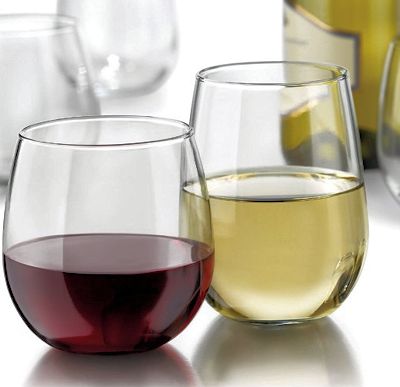Robert Bell's
Wines of Canada
Since 1992

The Wine Glass
Yes chosing the right glass is important. But despite the fact that glass companies seem to make a different glass for very wine; it is not necessary for you to follow suite. If you are not a connoisseur of wine and/or short of cupboard space one style of glass will do. An all purpose glass should be clear and long stemmed. It should have a bowl larger than its aperture and the glass must be thin.
For those who enjoy the wine experience, the glass becomes more important. A high quality wine glass perfectly harmonizes every wine's aroma and flavour. The shape of the glass will greatly emphasize the distribution of the aromas. The shape of a wine glass is very important as it can alter the aroma (or bouquet) of the wine. Frosted, coloured or worse, metal glasses are not advised. Choose a glass according to its simplicity. It must be colourless and very thin as to not alter the taste of the wine.
There are four basic wine glasses: White Wine, Red Wine, Sparking Wine and Dessert Wine.
Parts of a Wine GlassThe Foot - the bottom which allows your glass to stand upright
The Stem - the part between the Bowl and the Stem. Designed for you to hold your wine glass without the heat from your hands warming your wine, and without creating smudges on the bowl which will distract from the visual enjoyment of your wine.
The Bowl – Serves a myriad of purposes; here you'll find the most variation between glasses. The bowls of all wine glasses will be tapered upward with a slightly narrower opening at the top than at the bottom. This shape helps to capture and distribute the wine's aroma toward your mouth and nose.
The bowls of wine glasses are also designed to allow an amount of surface area appropriate to the wine - red wine glasses will have a larger amount of surface area for the wine to allow it to breathe, while white wine glasses will have a smaller amount of surface area. Champagne glasses will have a very small amount of surface area for the wine so that it retains its carbonation
The Rim – Imperative to achieving the full experience from your wines. The thinner the rim, the less the glass distracts from the wine as you sip; a good wine glass will have a "cut" rim that is smooth to the touch and does not inhibit the wine as it flows out of the glass. Less expensive glassware may have rims that are rolled or bumpy – while still functional, and very much practical for everyday use, these wine glasses may distract from the wine itself
Red
These glasses are designed specifically to enhance the flavour and aromas of red wine. The red wine glass bowl will be fuller and rounder with a larger opening to allow you to dip your nose into the glass to detect aroma*
White
A white wine glass bowl will be more U shaped and upright allowing the aromas to be released while also maintaining a cooler temperature.
For white wine, you may also want two types of wine glasses, one for younger, crisp whites and one for more mature, fuller whites.
The wine glass for younger whites has a slightly larger opening directing the wine to the tip and sides of the tongue to taste its sweetness.
The glass for more mature whites will be straighter and taller to dispense the wine to the back and sides of the tongue to taste its bolder flavours.
A sparkling wine glass (or flute) will be upright and more narrow to retain the carbonation and capture the flavour in the beverage.
The ideal glass for a sparkling wine has a slim tulip-shaped silhouette that turns towards the rim.
A dessert wine glass should be smaller to direct the wine to the back of the mouth so the sweetness doesn't overwhelm. Dessert wines generally have a higher alcohol content, making the small glass perfect for a smaller serving
seamless wine glass.
The latest style or trend in wine glass design is the stemless wine glass. It is not a new concept by any means just a new trend in North America. Wineries like Rustico Cellars on the Golden Mile and De Sousa Wines in Beamsville Ontario uses these glasses. They work well in the dishwasher and are less likely to fall or break when you have company.
Icewine
Often, it is recommended that Icewine be served in small liqueur glasses, but research has shown that stemware with a fairly large bowl (9 oz.) is better, as it amplifies the nose and intensifies the flavours. Glass manufactures today make Ice wine glasses.
Port Wine always deserves a good glass. It should be tulip-shaped and not too small. You should be able to swirl and smell the wine
* SMELL
The nose is much more sensitive than the palate.. The nose will tell you seventy-five percent of what you need to know about a wine. You can taste but four sensations, you can distinguish among 5,000 smells. Once again, swirl the glass ~ thus causing the wine's esters to evaporate. The esters carry the wine's aromas. Most people find it difficult to describe what they have smelled. So the first question is "Are there any offensive smells?" Then, "Are the odors pleasant or unpleasant?" If the wine is pleasant, try and relate the smell to something you like. Does it smell fresh, like fresh fruit or berries, nuts or flowers or spicy? Your taste will be affected by the smell.How to Serve Drinks
Generally speaking, when your servers are bringing drinks to the table, have them handle the glasses from the bottom.Tell servers never to put their hands and fingers near the lip of the glass. Why? Your customer doesn’t want your server’s germs near where they’re putting their lips. As many times as they wash their hands, they’re sure to be carrying bacteria around. (tweet this)
Always handle glassware by the stems, handles, or the bottom of the glass.
Please report errors
